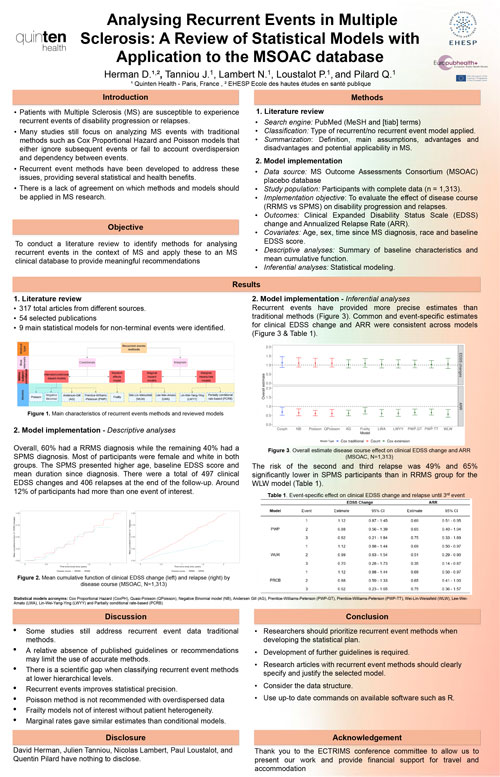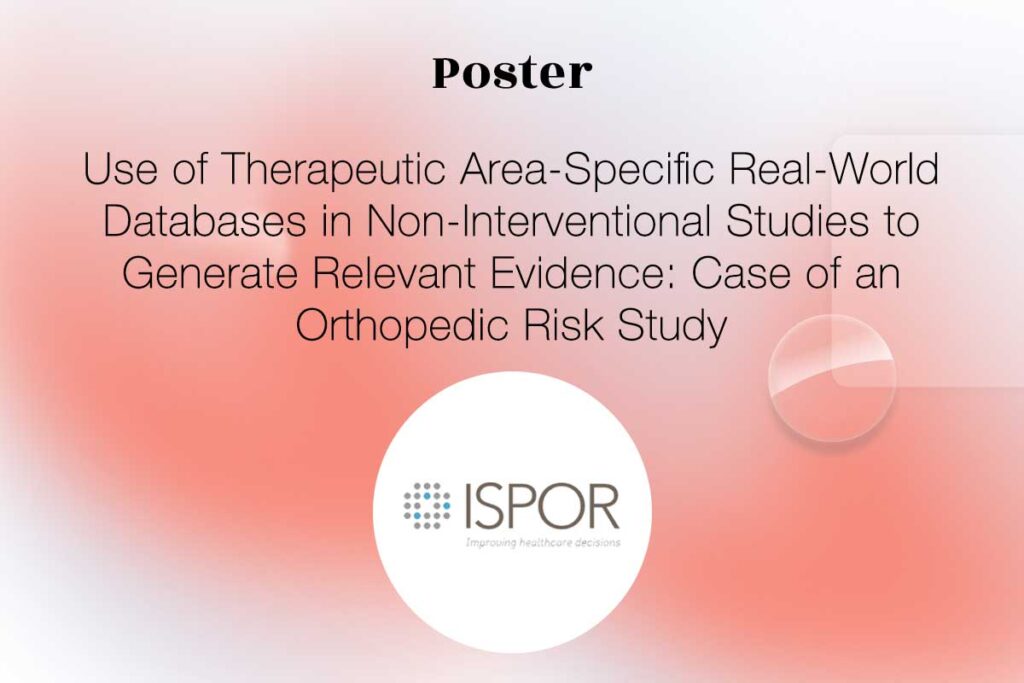Authors: D. Herman, J. Tanniou, N. Lambert, P. Loustalot, Q. Pilard
Date: 19th September 2024
CONFERENCE/VALUE IN HEALTH INFO:
N° 1821, 2024-09, ECTRIMS 2024, Copenhagen, Denmark
CLINICAL ASPECTS OF MS & RELATED DISEASES – 01.06 – Epidemiology
Introduction
In multiple sclerosis (MS), patients are likely to face repeated event such as confirmed disability progression (CDP). However, clinical trials often focus on analyzing time to first events, ignoring subsequent events, which are of clinical importance, despite the availability of statistical methods to take them into account.
Objectives/Aims
Our objective was to conduct a literature review to identify recurrent event methods applied in the context of MS. After assessing strengths and weaknesses of each approach, we applied them on the MS Outcome Assessments Consortium (MSOAC) to end up with key recommendations for potential MS research questions.
Methods
We conducted a literature review on PubMed and generated an attrition flowchart allowing replication of the search process. We then summarized the identified methods and applied them in R on the 12- week CDP stratified on the MS course in the MSOAC database. The latter includes aggregated individual data of placebo arms from 9 clinical trials. Overall, 2465 participants were included with a mean age of 41.8 (SD = 10.4). Of these, 64.1% patients were relapsing-remitting MS and 28.6 % (n = 706) had at least 1 CDP by the end of the follow-up.
Results
We included 54 articles in the literature review. Among them, two family of statistical models emerged: event rates (including but not limited to Poisson, Negative Binomial (NB), quasi-Poisson and Lin-Wei- Yang-Ying (LWYY) models) and time-to-event methods (including but not limited to Andersen-Gill (AG),
Prentice-Williams-Peterson (PWP), Wei-Lin-Weissfeld, Lee-Wei-Amato and frailty models). Among event rates models, we found that the use of methods such as quasi-Poisson is preferable in MS over traditional Poisson model because CDP tends to be over-dispersed. The NB and LWYY have less stronger assumptions and are suggested when the dependence structure is not of interest. Regarding time-to-event methods, the AG model makes full use of all events and allows for estimating the overall effect. However, it assumes independence between observations, which may not be plausible in MS.
Moreover, PWP merits attention particularly when the research question lies on the analysis of time between successive events in scenarios with relatively low number of events. Lastly, we implemented the identified methods using R and established a code repository to facilitate their implementation.
Conclusion
To conclude, our work aimed at raising awareness among researchers regarding the utility of recurrent event methods and offers guidance tailored to their research question for selecting and implementing appropriate recurrent event methods. While the Poisson and traditional Cox models remain commonly applied, our findings suggest that the adoption of more complex recurrent event methods may offer benefits in future investigations.









